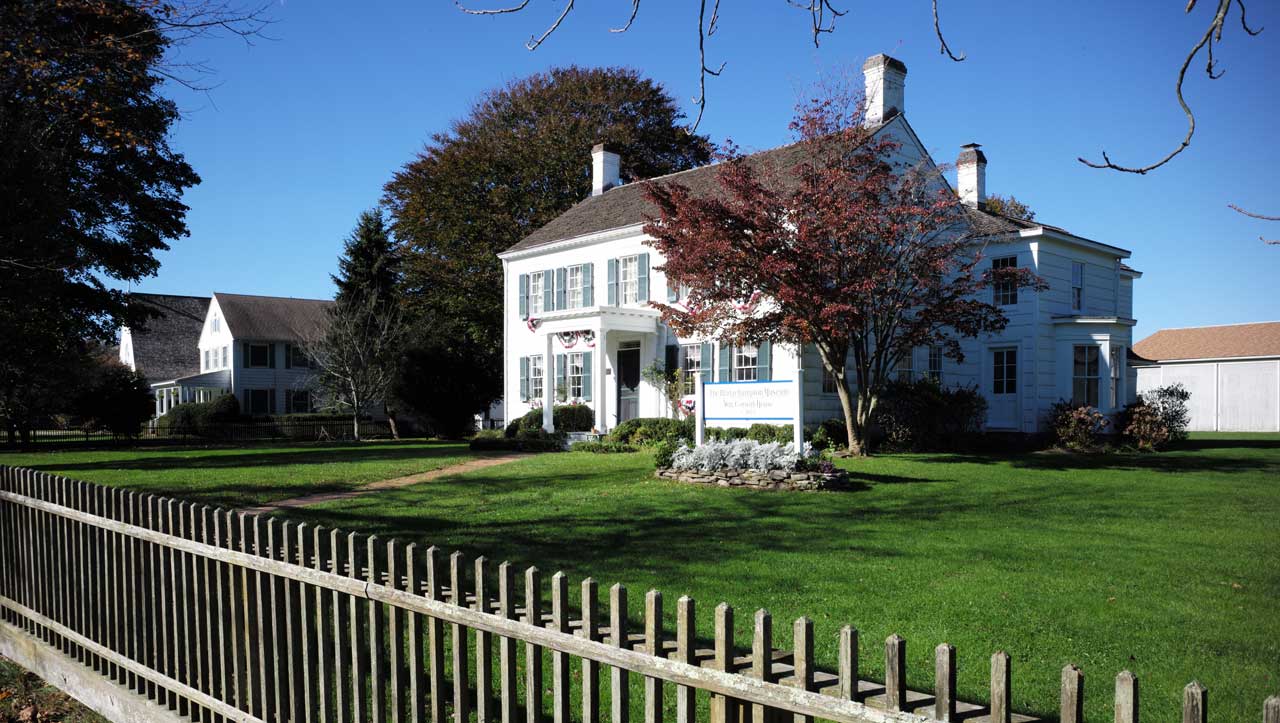
Bridgehampton Museum Corwith House
Let’s continue west on our exploration of Historic Museums and Monuments of the Hamptons . . .
Bridgehampton
The Bridgehampton Museum 631.537.1068
The Bridgehampton Museum, founded in 1956, serves as a historic and cultural hub for the community. It offers lectures, exhibits, concerts, tours and special events, as well as many resources for historical researchers, students and the public. Some of the events for 2019 include: Caroline Doctorow Concerts, Museum Exhibits, the Chamber Music Concert Series, Guided tours of the Beebe Windmill, The Charles Addams Cartooning for Kids Workshop, a Week-Long Pottery Workshop for Kids. the Cars & Coffee Car Show, the Bridgehampton Road Rally and more. Click here for Tickets and Information.

Addams Family at Dinner Cartoon - Charles Addams Foundation
- The William Corwith House (Circa 1825) 2368 Main Street Bridgehampton 631.537.1088
- The Corwith House serves as the headquarters of The Bridgehampton Museum and as exhibition gallery space. It also houses the Museum’s historic textile collection and other artifacts.
- The Strong Wheelwright Shop (Circa 1870’s) on the William Corwith House site, exhibits tools and materials typical of a 19th century wheelwright shop, as well as a blacksmith’s forge used in blacksmithing demonstrations several times a year.
- The Bridgehampton Jail (1907) served as the Town Lockup. A report from 1916 notes that: ‘It is without water and electric lights, although the village has both. The village has no sewers and the owner of the land on which the lockup stands will not consent to a cesspool upon the premises, so that a toilet is not feasible, but there should be not only an electric light in the lockup but also one on the outside, as it is situated in a lonely place and it is unreasonable to expect an officer to take a criminal to this lockup in the dark, unlock the door, and at the same time retain the custody of his prisoner. The number of arrests averages about twenty-five a year, most of whom are held overnight. No lodgers are cared for.’
- The Beebe Windmill (1820), located on the corner of Hildreth Avenue and Ocean Road, is one of only eleven windmills remaining on Long Island and was originally constructed in Sag Harbor in 1820. It is an example of a “smock mill” with a stone foundation and four-story tower which is exceptionally large for a windmill.
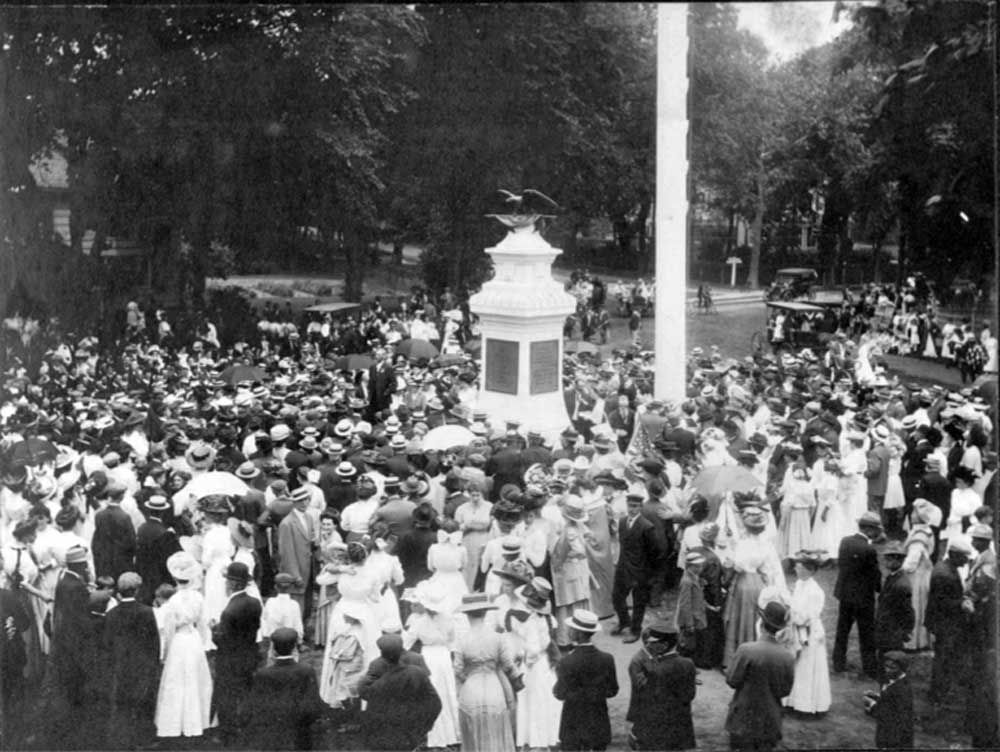
Bridgehampton Founders Monument Inauguration 1910 B&W Photo
-
- The Founders Monument (1910), at the intersection of Lumber Lane, Ocean Road and Montauk Highway, honors the descendants of Bridgehampton residents who died in the Revolutionary War, the War of 1812, The American Civil War, World Wars I and II, and the Korean and Vietnam Wars.
- Triangular Commons, on Ocean Road, served as the training grounds for militia companies from Bridgehampton, Sag Harbor, Southampton, and East Hampton prior to the Revolution (1776-1783) because it was centrally located on the South Fork.
- 27East (2017): Bridgehampton Museum Displays Presidential Campaign Memorabilia From Washington To Trump
- Dan’s Papers (2018): ‘Boats, Barns and Bootlegging’ at the Bridgehampton Museum
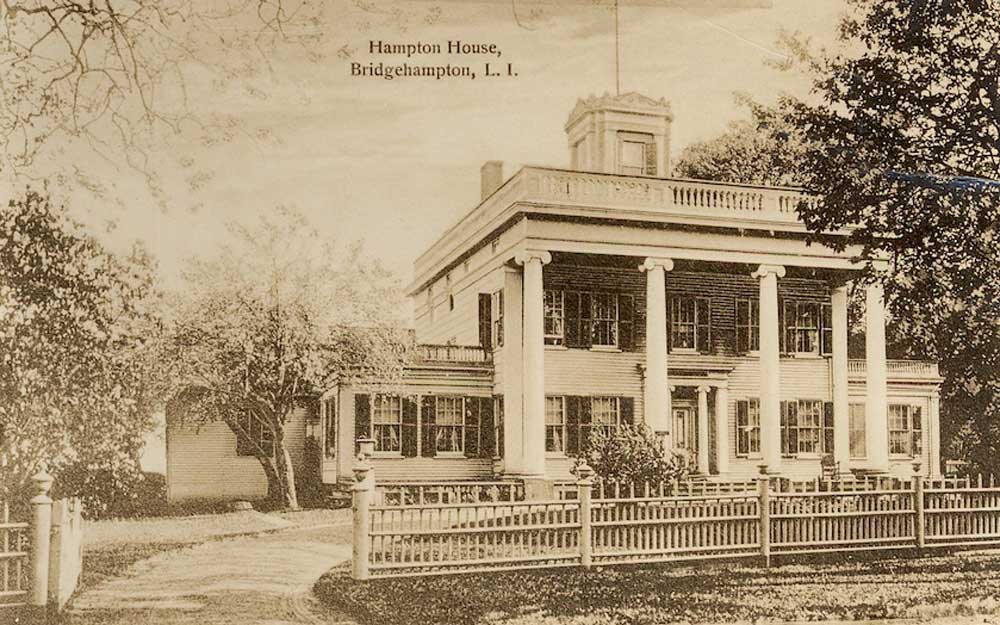
Nathaniel Rogers House Historic Postcard
- The Nathaniel Rogers House (Circa 1824) 2539 Montauk Highway, Bridgehampton
- The Nathaniel Rogers House is a prominent sight on Bridgehampton’s Main Street. The house is a glorious example of Greek Revival architecture and is one of the few full portico (temple front) Greek Revival houses to survive on Long Island. According to the Society for the Preservation of Long Island Antiquities, it is one of the most important architectural gems of its style on Long Island.
- The Rogers House is currently undergoing a major restoration and, once restored, will be an active center for historical research and the Museum will establish its new headquarters in the building. Gallery spaces will present and interpret subjects such as the local whaling industry, local street and track racing, local art and artists, metal banks and toys, and other subjects related to local history. A sound studio will also be open to the public to encourage the recording of family and community oral histories by community members.
- In the meantime, the Museum Archives are housed at 2539-A Montauk Highway, open Monday, Wednesday and Friday 10am – 3pm and Saturdays by Appointment. 631.613.6730
- SagHarbor Express (2018): Final Phase Begins at Nathaniel Rogers House
- The History of Auto Racing in Bridgehampton - Keep your eyes peeled for Gary’s up-coming blog. I figured I should leave that for the auto enthusiast in the family!
- The Hayground Cemetery on Montauk Highway and Windmill Lane
- 27East (2009): Hayground Cemetery has Rich History
- Bridgehampton’s Summer Colony by Julie Greene (2015 Arcadia Publishing)
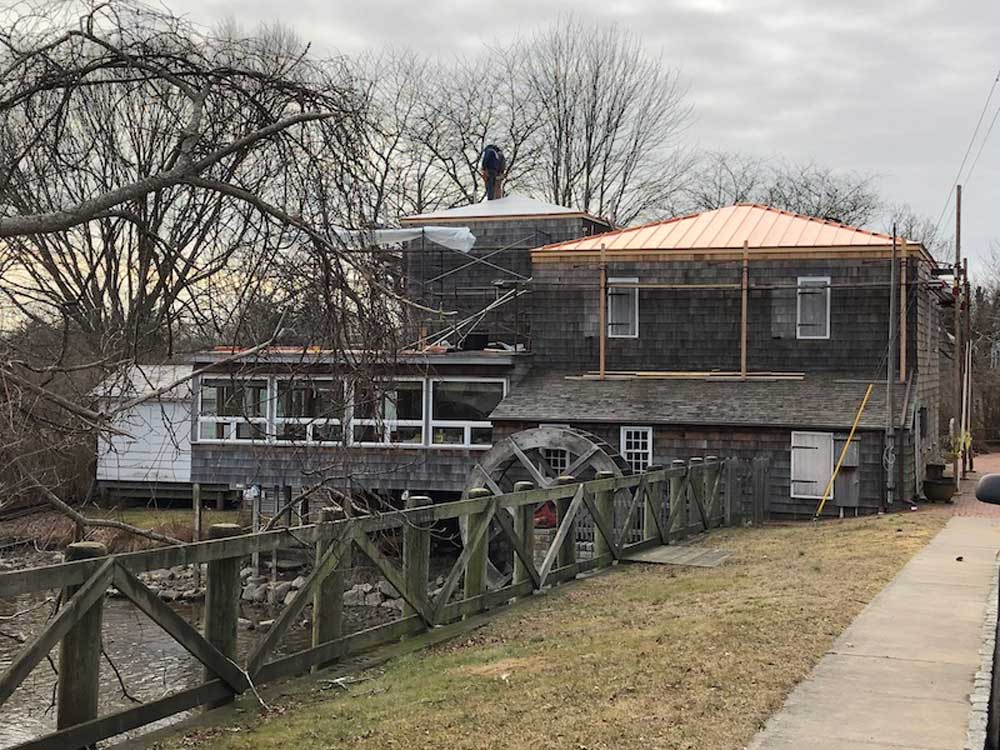
Water Mill Museum - New Copper Roof Restoration
Water Mill
- Southampton Town: Water Mill Heritage Area
The Water Mill Museum
41 Old Mill Road, Water Mill 631-726-4625
- The mission of the museum is to preserve its 1700’s historic water-powered grist mill, the other buildings at the site, its museum collection, and to inform the public about the history of the mill, the hamlet of Water Mill, and its cultural heritage - since 1644.
- During the winter of 2018 and 2019 the museum has undertaken a major renovation including a new standing seam metal roof, similar to the one the mill had in earlier times. No more running around to strategically place pails under the leaks! We look forward to the grand reopening this spring . . .
- Water Mill: Celebrating Community: The History of a Long Island Hamlet, 1644 - 1994 by Marlene Haresign & Marsha Kranes - The Book is also available at the Museum.
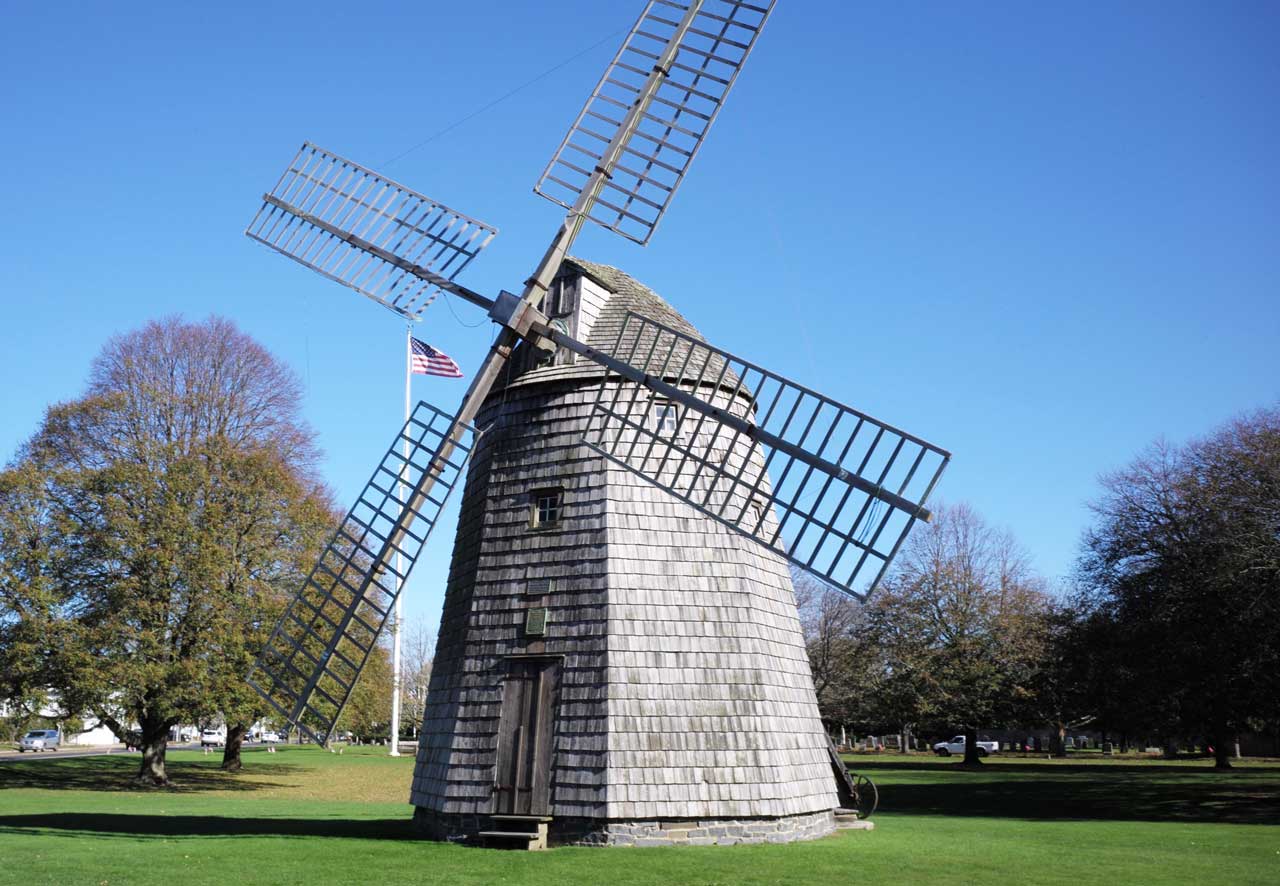
James Corwith Windmill, Water Mill NY
Corwith Windmill
4 Old Mill Road, Watermill 631.726.4625
- The Corwith windmill (1800) is the smallest, and second oldest of the 11 surviving windmills on the South Fork of Long Island, which has the largest regional group of windmills in America. Of the local mills, it is the only example of the early type of smock mill which had a stationary tower with a revolving cap that sat directly on a greased curb at the top of the tower Later smock windmills, such as the Hayground mill, had rollers on the curbs to facilitate rotating the cap and its wind sails.
- The mill was built Sag Harbor by James Mitchel in 1800 and relocated to Water Mill in 1813 when it was purchased by the Corwith family. It operated until 1887 grinding corn. The mill, an example of the utilitarian wood age architecture and was restored in 1987.
- Library of Congress: Windmill at Water Mill, Montauk Highway & Halsey Lane, Water Mill, Suffolk County, NY
Water Mill Community House (1897)
Located on Montauk Highway in the heart of the Hamlet.
- Although built for religious services, no established church occupied the building. Services were run by lay teachers or visiting preachers. Afternoon Sunday School was held in the building until about 1913. Sometime in the 1920s, religious services ceased - but the building continued to be used as a meeting hall.
- Seapoose is an anglicized spelling of the Shinnecock Indian word “little river.” When a cut is made in the barrier beach separating a bay from the ocean, the cut quickly becomes a little river. Bay water runs out at low tide and the ocean runs in at high tide. This cut can occur naturally during storms or can be created by man.
- The Shinnecocks are believed to have dug the seapoose at Mecox Bay, Water Mill to keep the salinity of the bay appropriate for shellfish, which they harvested there. In subsequent years, and with much heated discussion, the colonists assumed responsibility for the cutting of the gut, by hand and animal labor. An old horse-drawn sand scoop once used to make the cut is on exhibit at the Water Mill Museum.
- Today machinery is used to dig the seapoose, and the Town Trustees determine when. They get lots of advice from baymen who want to let salt water in to encourage shell fish; from homeowners who live around Mecox Bay and Mill Creek and are concerned about having their land and cellars flooded; and from recreational boaters who want a high water table.
- 27East (2013): Trustees Force Mecox Closed, Deviating from Policy
- SagHarbor Express (2018): Town Working on Management Plan for Opening Mecox Bay Cut to Ocean
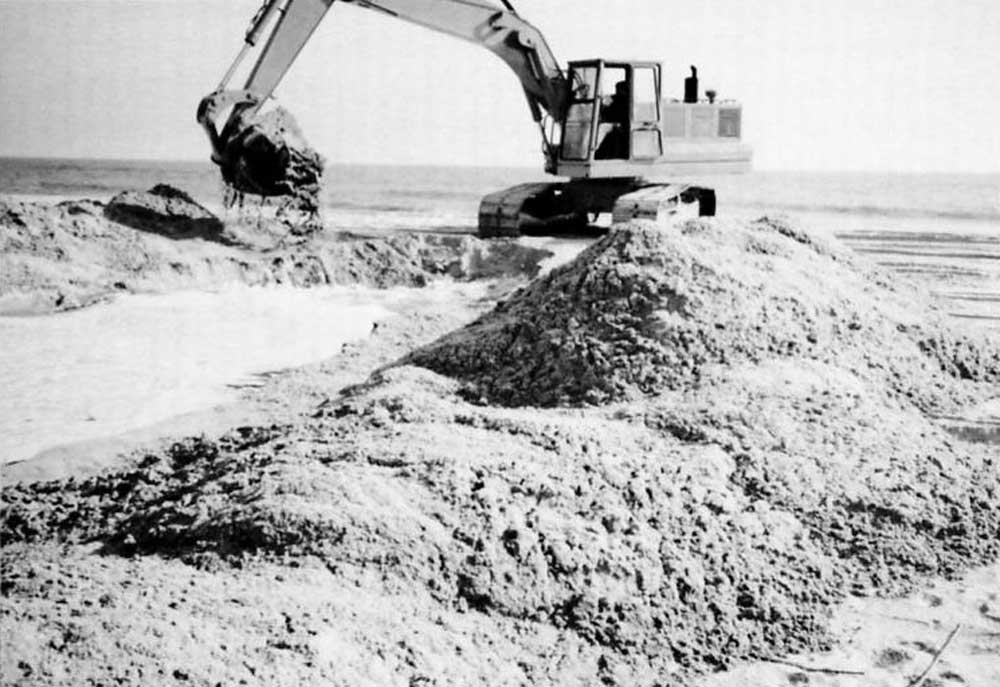
The Seapoose - Digging the Gut (with Machinery) Water Mill Museum
Next we will move on to Southamptons!
Sylvia










